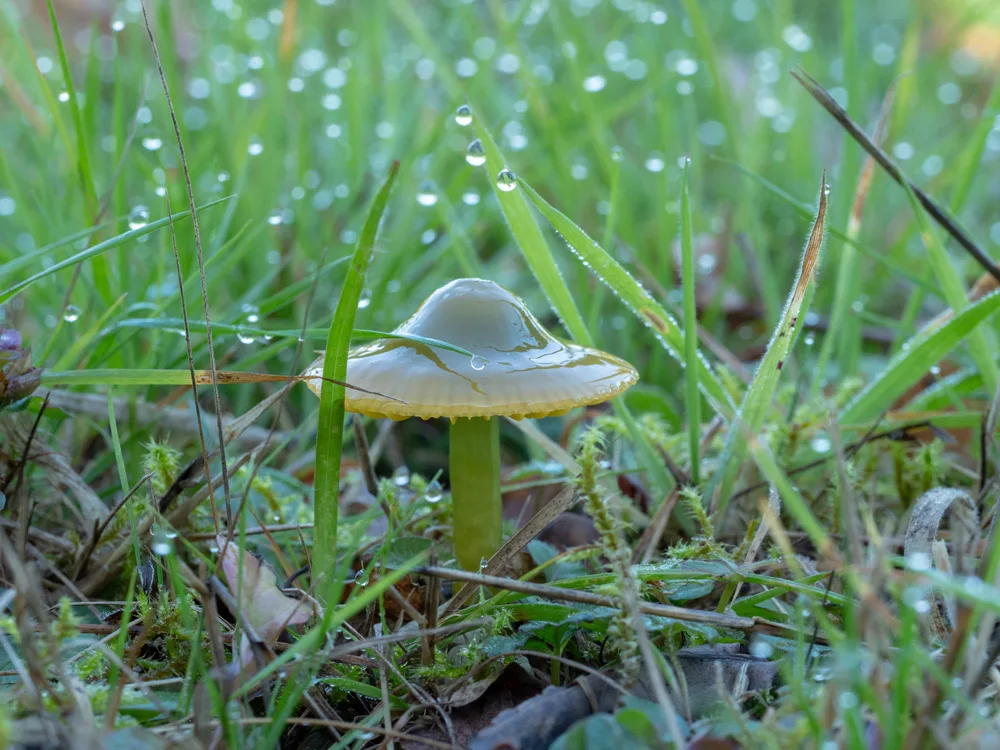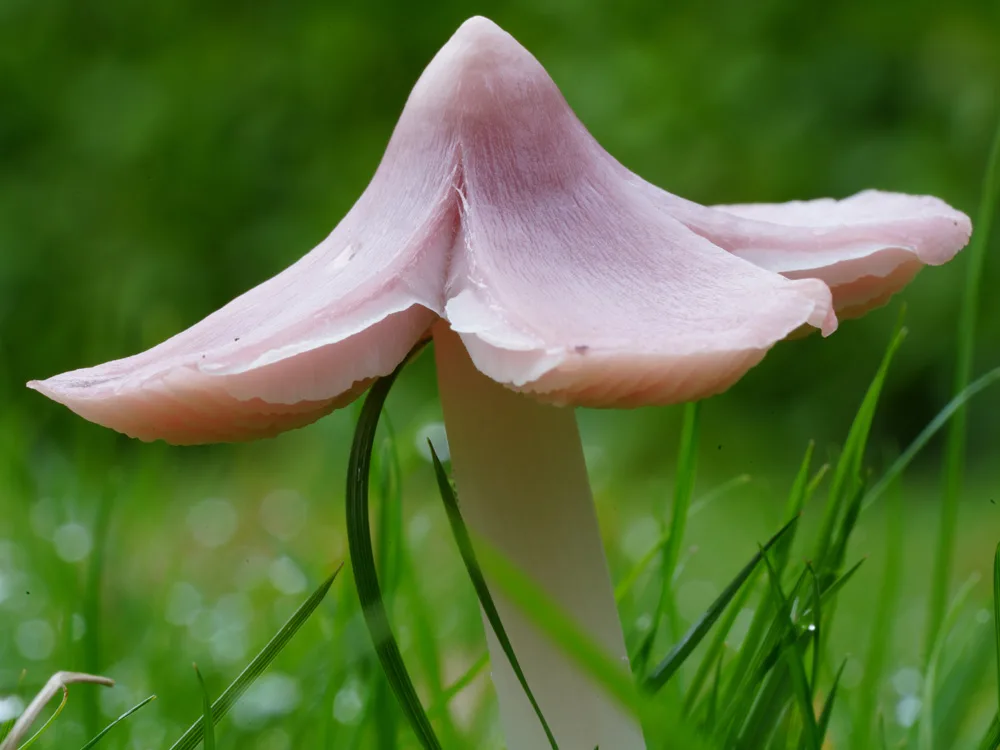Bright as boiled sweets and fussy as cats, these fungi reveal Dorset’s ancient meadows – Jane Adams invites you to meet the waxcaps

This month, if you walk through a meadow of tightly-cropped grass, you might spot colours you’re not expecting: red, yellow, pink, even purple. If you do, you have probably found waxcaps – small, glistening grassland fungi – and before long you will be spotting them all over the place.
Waxcaps are different from many fungi, in that they have a fondness for old, unimproved grassland. This is grassland that feels caught in a time warp, still managed with traditional farming methods, never ploughed or treated with modern fertilisers. Finding a wax cap is usually a sign that the surrounding grass has been left untouched for decades, even centuries, because they they are so fussy about where they grow.
Sadly, that also makes these little organisms not only special but increasingly rare. The intensification of farming has pushed waxcaps – and the habitats they depend on – into the conservation spotlight.
In Dorset we are lucky. We still have some very special waxcap hotspots right on our doorstep. Down Farm, near Beaminster, is designated a Site of Special Scientific Interest (SSSI) specifically for its fungi, including an amazing array of waxcaps. Dorset Wildlife Trust’s Kingcombe Meadows is another fungi-rich site, criss-crossed with public footpaths and well worth exploring. The National Trust’s Stonebarrow on the Golden Cap estate hosts an autumn walk to introduce visitors to these colourful fungi.
Though there are more than 40 species of waxcap in Britain, they’re so rare you’ll be lucky to see more than a handful when you are out and about. Some have intriguing names: the Blackening waxcap starts out orange before turning sooty black; the Parrot waxcap, slimy, small and tinged green; the Meadow waxcap, plump and buff coloured and the Scarlet and Golden waxcaps, which glow once you notice them tucked into the grass. For Barbie fans, there is even a Pink waxcap, delicate and glossy, as if crafted from sugar icing.
Fungi really come into their own in October, and with UK Fungus Day on Sunday 5 October, why not take a walk in a grassy meadow, keep your eyes down, and see what treasures are waiting to be discovered?

Spotting waxcaps
October to November, especially after rain
Look in short, mossy grass
Take photos, not specimens!
Take a fungus walk
Dorset Wildlife Trust’s Mushroom Foray, 10th and 25th October
National Trust’s Hidden Fungi of Studland, 19th October
Careys Secret Garden’s Secret Fungi Festival, 24th to 26th October
Dorset Fungus Group runs forays every Sunday morning
Grown Up Mushrooms’ Foraging courses run throughout October


